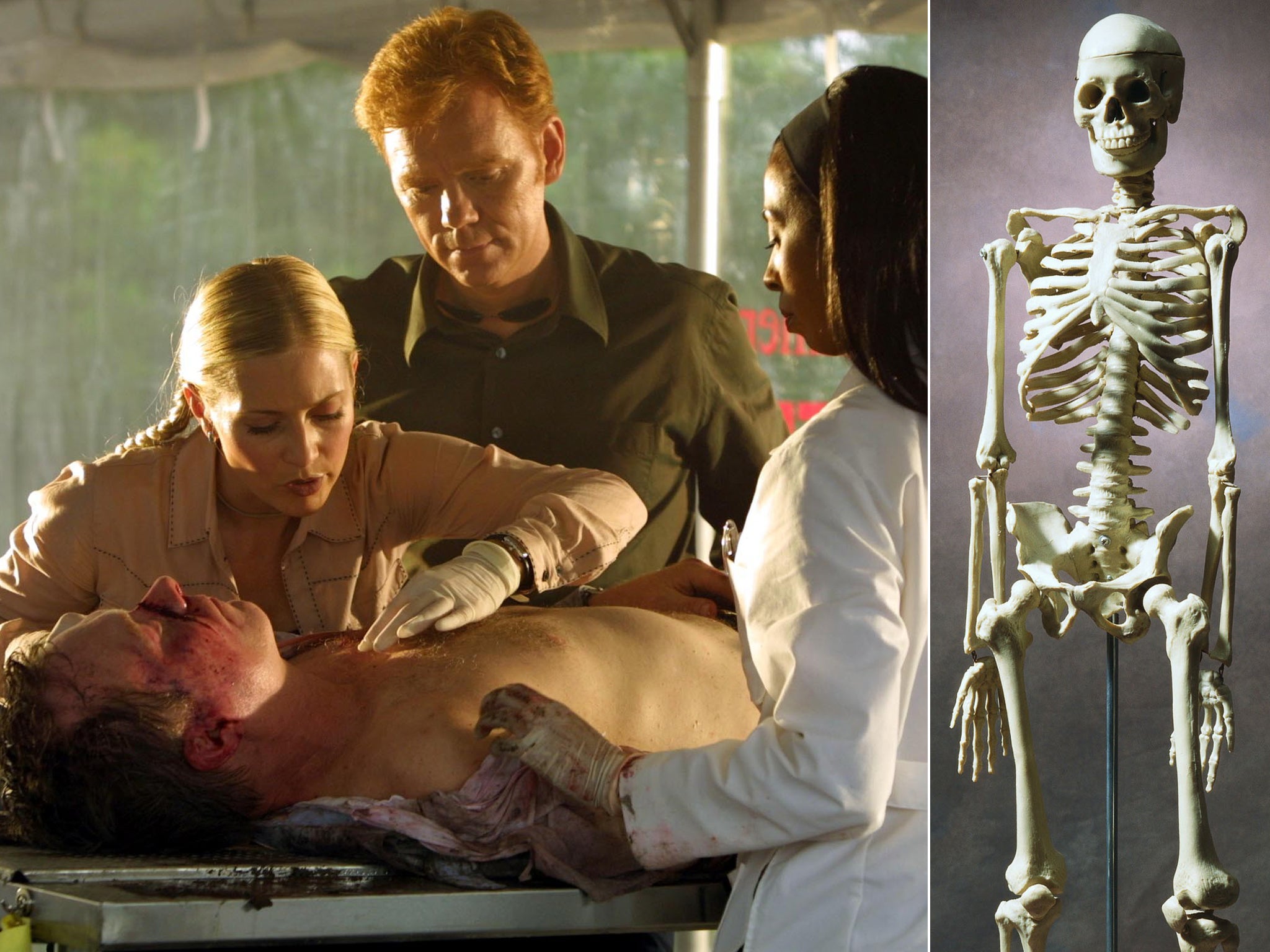Forensic scientists need skeletons to train – but they’re down to bare bones
Universities struggling to find remains to study as colonial corpses are sent home

Considering scientists estimate that the number of people who have lived – and died – now comfortably exceeds 100 billion individuals, it would seem fair to assume that there was no shortage of one of the most fundamental human resources: bones.
However, social taboos, strict laws governing human tissue use and legislation demanding the repatriation of historic remains mean that forensic science students are becoming increasingly dependent on technology, rather than the real thing, to learn their way around the human skeleton.
Recent years have seen a massive increase in the demand for courses in forensic science, fuelled by the popularity of television programmes such as CSI. But many universities are struggling to provide the next generation of crime scene investigators with actual bones on which to practise.
Now a British company, Anthronomics, hopes to solve the problem by working with computer game developers to create new software which scans existing skeletal collections and makes 3D digital images of them available on tablet devices such as the iPad.
The technology is about to be trialled at sites in the UK and the US, and could be used to train students across the world to examine bone trauma in the remains of crime victims, as well as identify casualties of genocide and human rights abuses.
Dr Tim Thompson, a reader in biological and forensic anthropology at Teesside University and founder of Anthronomics, said teaching skeletal anatomy had become incredibly difficult in recent years.
“People are quite happy for you to use archaeological remains but when it comes to the present time they are less willing,” he said. “In the UK you can donate your body to medicine but there are very strict rules which mean that it must be used for medical education and must be in anatomy or a clinical setting,” he said.
Dr Piers Mitchell, President of the British Association for Biological Anthropology and Osteoarchaeology, said the majority of victims of violence – such as blast, burn or other trauma injuries – whose remains would be useful in the study of forensic science, have their bodies buried or cremated before they can be donated.
“Most of the places that study forensic science are the newer universities which do not have well-established archaeological collections and which may not be connected to a medical school,” he said.
The shortage is international. Many students from the US are now choosing to move to the UK to study since the passing of the Native American Grave Protection and Repatriation Act, which requires universities to hand over contested bone material to tribes’ representatives.
In Britain, skeletons brought to the country during colonial times have also been returned after claims from communities in New Zealand and Australia. Many students rely on remains dating back to Anglo-Saxon times while others practise on plastic casts which are expensive and lack the subtleties of the real thing.
3D images are still a poor substitute for the genuine article, as Dr Thompson conceded, but with supplies running short, they could be a vitally useful alternative – and do have the merit of being far cheaper to produce than the plastic casts. For many would-be crime scene investigators, Dr Thompson said: “They are the closest you can get to the real thing.”
Subscribe to Independent Premium to bookmark this article
Want to bookmark your favourite articles and stories to read or reference later? Start your Independent Premium subscription today.

Join our commenting forum
Join thought-provoking conversations, follow other Independent readers and see their replies